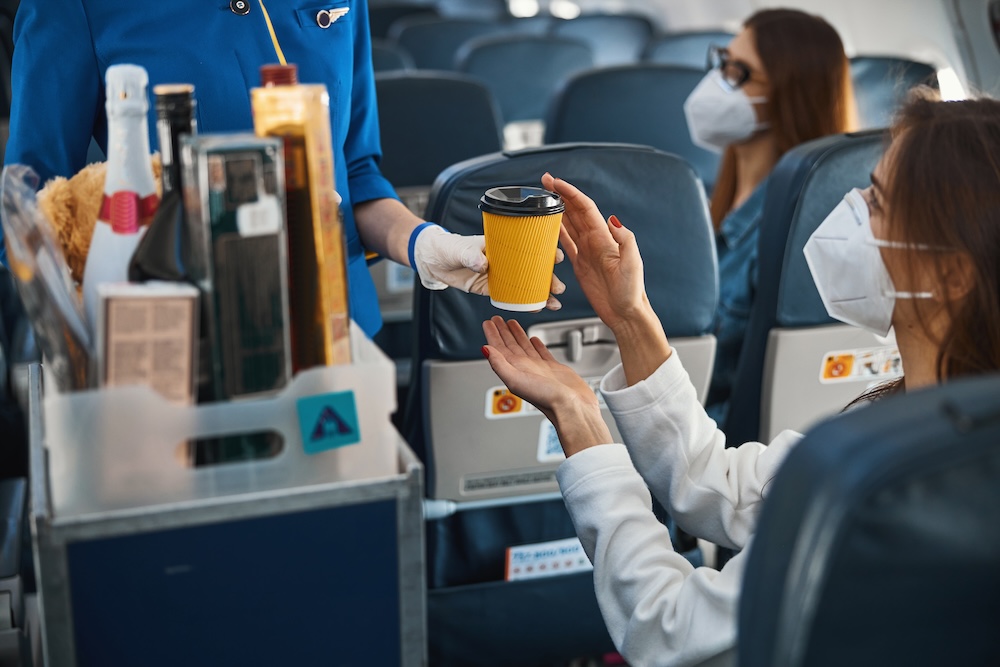In an era of climate crisis, one industry continues to soar above regulation and scrutiny: air travel. While aviation has revolutionized global connection, it comes with a high environmental cost that few travelers fully understand.
From carbon emissions to single-use waste, air travel is a major contributor to climate change and pollution — and yet it’s often left out of sustainability conversations.
Why Focus on Air Travel?
Air travel accounts for 2.5% of global CO₂ emissions, but its overall climate impact is much higher — estimated at 3.5% when non-CO₂ effects like contrails and nitrogen oxides are included.
Despite representing a relatively small share of global emissions, air travel is a luxury activity: only a small percentage of the world’s population flies regularly. In fact, 1% of people are responsible for over 50% of global aviation emissions.
This means those who fly often — especially for business or leisure — are contributing disproportionately to the climate crisis.
The Carbon Footprint of Flying
Here’s a breakdown of just how much pollution comes from air travel:
- A roundtrip flight from New York to London emits approximately 1 metric ton of CO₂ per passenger.
- That’s equivalent to driving a gasoline-powered car for about 2,400 miles.
- In comparison, the average annual per capita carbon footprint in many developing countries is less than 1 metric ton.
Flying is among the most carbon-intensive activities an individual can do — especially in premium seating. Business class emits around 2–3 times more CO₂ than economy due to larger seat sizes and fewer passengers per square foot. First class is even worse.
Beyond CO₂: Other Environmental Impacts of Flying
While carbon emissions grab headlines, air travel’s environmental damage extends far beyond CO₂.
1. Nitrogen Oxides (NOx) and Contrails
Jet engines release NOx at high altitudes, contributing to ozone formation and affecting atmospheric chemistry. Contrails — the visible trails behind planes — can form high-altitude clouds that trap heat, intensifying global warming.
2. Aircraft Manufacturing and Fuel Extraction
Aircraft require vast amounts of aluminum, titanium, and synthetic materials to produce — all of which come with mining, manufacturing, and transportation emissions.
Jet fuel, a petroleum-based product, must be refined and transported globally, adding to the industry’s total carbon footprint.
3. Airport Operations and Infrastructure
Airports themselves consume enormous amounts of electricity, water, and land. Baggage systems, lighting, air conditioning, and fuel services contribute to energy consumption and emissions.
Many airports are also expanding, which leads to deforestation, increased noise pollution, and displacement of local communities.
The Waste Problem in Air Travel
Flying generates staggering levels of waste, much of it single-use:
- 5.7 million tons of cabin waste were generated globally in 2023, according to the International Air Transport Association (IATA).
- This includes plastic cups, utensils, food wrappers, blankets, packaging, and partially consumed meals.
- Most of this waste is incinerated or landfilled, since international flights are subject to strict biohazard regulations that discourage recycling.
And it’s not just passengers — catering companies, cleaning crews, and onboard services all contribute to a constant stream of disposable waste.
Business Travel: A Major Contributor
While some people fly once or twice a year, business travelers can take dozens of flights annually. In large companies, this adds up to massive environmental costs.
Corporate travel accounts for about 15–20% of global air travel, with frequent fliers racking up carbon emissions faster than any other group.
Companies often fail to disclose the true impact of their travel in ESG reports — or rely on offsets rather than actual reductions.
Private Jets: The Worst Offenders
Private jets are the most polluting form of air travel per passenger:
- A single private jet can emit 2 metric tons of CO₂ in one hour.
- That’s the same as an average person’s entire yearly footprint in some countries.
- Despite carrying just a few passengers, they generate 14 times more CO₂ per passenger than commercial flights.
Private jet use surged during the pandemic — and remains high, contributing to luxury-driven emissions inequality.
Alternatives: Can We Fly More Sustainably?
There is no such thing as “sustainable flying” yet, but some options are less harmful:
- Rail travel emits up to 90% less CO₂ than flying and is often faster for short distances (e.g., Paris to London).
- Virtual meetings can replace in-person events and save millions of miles annually.
- Sustainable aviation fuel (SAF) offers some promise but is expensive, in short supply, and currently only reduces emissions by 30–50%.
What About Offsetting?
Many airlines offer the option to offset your flight’s emissions through tree planting or renewable energy credits.
But offsets are controversial:
- They often don’t deliver promised reductions.
- Some projects are poorly monitored or take years to remove carbon.
- Offsets can create a false sense of action, delaying the systemic change needed.
Experts increasingly argue that reducing air travel is more effective than offsetting it.
How to Rethink Travel in a Climate-Conscious World
If you care about sustainability, it’s worth reassessing how and why you fly. Consider the following:
- Fly less, especially for short trips: Use rail or virtual options when possible.
- Avoid premium seating unless necessary — more space equals more emissions.
- Support policies that limit private jets and subsidize low-carbon alternatives.
- Hold companies accountable for their travel emissions.
- Travel intentionally: Combine trips, extend stays, and consider environmental impact when planning.
Common Questions About Air Travel and Pollution
Is flying really worse than driving?
For short trips, no — especially if driving alone in a gas-guzzling vehicle. But for medium to long distances, flying is almost always worse, especially in terms of emissions per hour.
Can electric planes fix the problem?
Electric planes are still in early development and currently only feasible for short-range, small-capacity flights. We’re still years — if not decades — away from large-scale electric aviation.
What’s the best way to reduce flying impact?
Avoid unnecessary flights, choose economy, and travel less often but stay longer. Virtual meetings and high-speed rail are the best substitutes for now.
Is SAF a real solution?
Sustainable aviation fuels can help reduce emissions but won’t solve aviation’s full impact. They’re not yet widely available and can’t address contrails or NOx pollution.
Final Thoughts: The Sky Is Not the Limit
Flying connects people across the world — but at a cost we can no longer ignore. The pollution and waste generated by air travel is significant, avoidable, and largely unchecked.
Rethinking how we travel isn’t about guilt — it’s about balance, intention, and responsibility. In a warming world, fewer flights could mean clearer skies, cleaner air, and a future we can still reach — without leaving a trail of destruction behind.









Reader Interactions